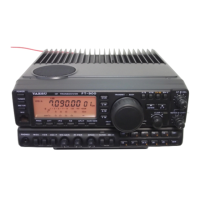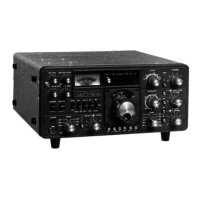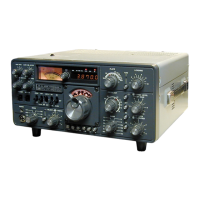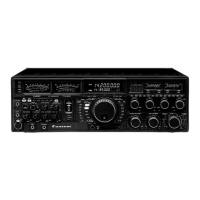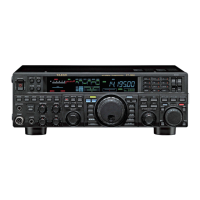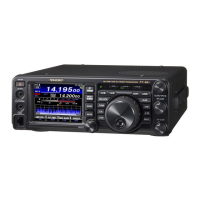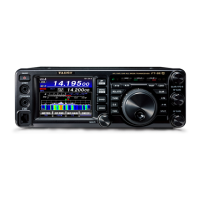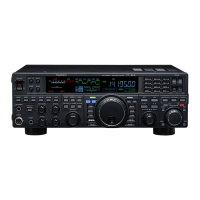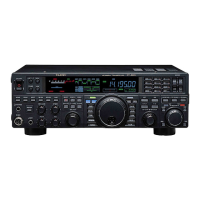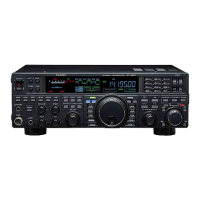3. When 50 channels are loaded or the scanner reaches the band edge, the scanner
will stop and the transceiver will revert to the starting frequency.
4. To recall the Smart Search Memories just stored, rotate the MAIN DIAL knob.
5. Press the microphone’s
[
VFO/MR
]
button momentarily to exit the Smart Search
mode.
Note that these memories are so-called “soft” memories; they will be lost if you
exit Smart Search to a VFO/Memory, or if you initiate a new Smart Search. Smart
Search also does not store CTCSS or DCS information; if you cannot access a
repeater found during Smart Search, you may need to investigate possible access
tones.
Priority Channel Monitoring
In the U.S.A. version, the Priority function allows automatic checking for activity
on Memory Channel 1 every five seconds while operating on the VFO or a differ-
ent memory. When the receiver detects a signal on the designated “Priority” memory
(Channel 1), operation automatically shifts to that memory while the signal is
present (plus a few seconds). If you transmit while “paused” on the Priority chan-
nel, priority monitoring will cease, and the transceiver will “hold” indefinitely on
the Priority channel.
The transceiver will only check Memory Channel 1 as the Priority channel if you
are operating in the memory mode. No other memory may be designated as the
Priority channel.
To set up for Priority monitoring:
1. Preset the SQL control to silence the background noise on a clear channel, then
store the frequency to be the “Priority” channel into Memory Channel 1.
2. Press the
[
VFO/MR
]
button on the microphone to operate in the VFO mode. If
you are in the memory mode, select the memory on which you wish to operate
(other than the Priority channel).
3. Press the microphone’s
[
ACC
]
button momentarily to start Priority monitoring
(a “
P
” icon will appear at the bottom left-hand corner on the LCD in the “CON-
TROL MODE” of the display).
During Priority monitoring, the displayed frequency will shift to the Priority memory
briefly about every five seconds, while the receiver checks for the presence of a
signal.
When no signal appears on the Priority memory (causing the squelch to open),
you can tune, transmit and receive on the VFO, or select and operate on other
memories; however, you cannot scan (except manually, using the microphone’s

